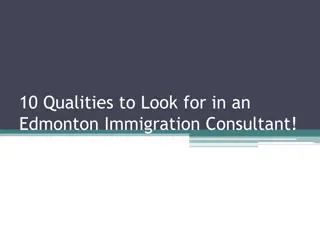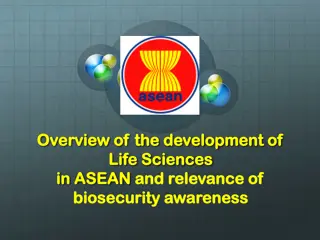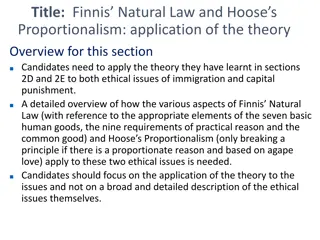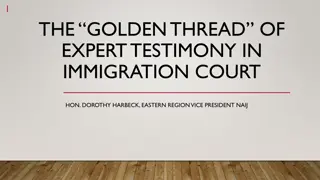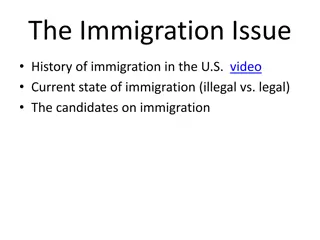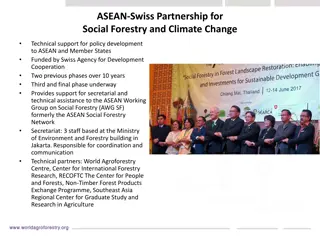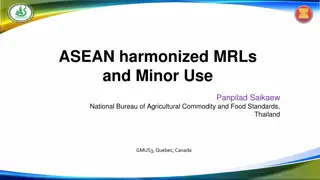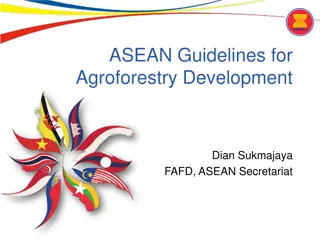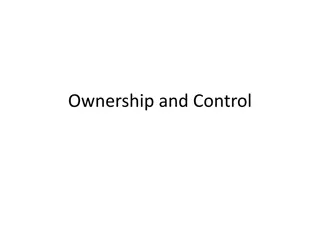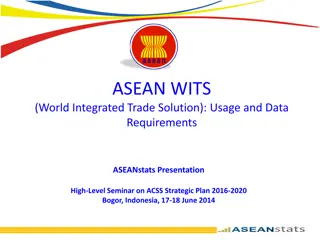Immigration Policies in ASEAN: A Comprehensive Overview
ASEAN, founded in 1967, plays a crucial role in promoting social, economic, and political cooperation among member states. The policy brief delves into immigration challenges and opportunities within the ASEAN context, emphasizing the importance of skilled labor migration. Analyzing the economic impacts on countries like Malaysia and Thailand, the policy recommendations focus on addressing brain drain, streamlining immigration processes, and investing in human capital for long-term growth.
Download Presentation

Please find below an Image/Link to download the presentation.
The content on the website is provided AS IS for your information and personal use only. It may not be sold, licensed, or shared on other websites without obtaining consent from the author. Download presentation by click this link. If you encounter any issues during the download, it is possible that the publisher has removed the file from their server.
E N D
Presentation Transcript
Immigration in ASEAN A Policy Brief Ben Duncan Gurpreet Jaswal Dayton Marks
ASEAN Association of Southeast Asian Nations Founded in 1967 Promotes the social, economic and political cooperation Member states: Brunei, Cambodia, Indonesia, Laos, Malaysia, Myanmar, the Philippines, Singapore, Thailand and Vietnam
Immigration in the ASEAN Context Demographic transition Labour market shortages Income differentials Ease of migration Lack of discourse on immigration within regional blocs ASEAN Economic Community committed to skilled labour migration
Study Long-run economic impacts Malaysia and Thailand High GDP per capita vs. Low GDP per capita Geography Migration costs
Methodology Time Series model Assumptions: Harris-Todaro Model of urban-rural migration Solow Model for exogenous growth ? = ?? ?,? ?0 ?1 ?2 ?3 ?0 ??= ?+ ?1 ?+ ?2 ?+ ?3 ?dt ? = 0 ??= ?? 1 (1 + ???????(????(),?,?)?
Policy Recommendations Short-run growth Low-skilled immigration Long-run growth High-skilled immigration Criteria based immigration system Liberalize and regularize immigration Address brain drain issue Expedite bureaucratic dealings For the long-run, invest in human capital
References Asian Development Bank. (2015). ASEAN Community 2015: Managing integration for better jobs and shared prosperity. Retrieved from https://www.adb.org/sites/default/files/publication/42818/asean-community-2015-managing-integration.pdf Chiswick, Barry R. Immigration: high skilled vs. low skilled labor? No. 28. IZA Policy Paper, 2011. Borjas, G. (2003). The Labor Demand Curve is Downward Sloping: Reexamining the Impact of Immigration on the Labor Market. doi:10.3386/w9755 Card, D. (2005). Is the new immigration really so bad? The Economic Journal, 115(507). Retrieved from 10.1111/j.1468-0297.2005.01037 De Grauwe, P. & Zhang, Z. (2016). The rise of China and regional integration in East Asia. Scottish Journal of Political Economy, 63(1), pp. 1-6. Retrieved from 10.1111/sjpe.12107 Guelser, S. & Heal, A. (2014). Moving freely? Labour mobility in ASEAN Policy Brief No. 40. United Nation Economic and Social Commission for Asia and the Pacific. Harris, J., & Todaro, M. (1970). Migration, Unemployment and Development: A Two-Sector Analysis. The American Economic Review, 60(1), 126-142. Retrieved from http://www.jstor.org/stable/1807860 Latif, E. (2015). The relationship between immigration and unemployment: Panel data evidence from Canada. Economic Modelling,50, 162-167. doi:10.1016/j.econmod.2015.06.013 Lee, G. & Jeong, J. (2016). An investigation of global and regional integration of ASEAN economic community stock market: Dynamic risk decomposition approach. Emerging Markets Finance & Trade, 52(9), pp. 2069-2086. Oreopoulos, P. (2009). Why Do Skilled Immigrants Struggle in the Labor Market? A Field Experiment with Six Thousand Resumes. doi:10.3386/w15036 Pasadilla, G. O. (2011). Social security and labor migration in ASEAN Research Policy Brief 34. Asian Development Bank. Tai, W. P., & Soong, J.J. (2014). Trade relations between China and Southeast Asia strategy and challenge. The Chinese Economy, 47(3), 23 39. doi:10.2753/ces1097-1475470302 Tapinos, George P. (2000). Globalisation, regional integration, international migration. International Social Science Journal, 52(165), pp. 297-306. Tuccio, M. (2017). Determinant of intra-ASEAN migration. Asian Development Review, 34(1), pp. 144-166 Zhao, S. & Zhang, Z. (2016). The political economy of energy resources between China and ASEAN states: Opportunities and challenges. The Chinese Economy, (49), pp. 456-466
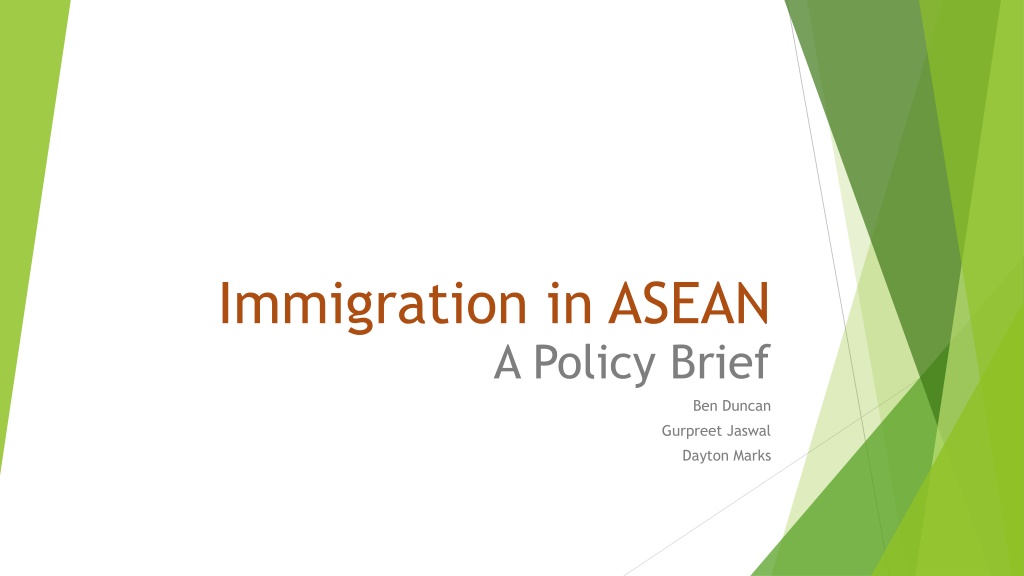
 undefined
undefined










